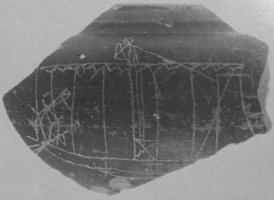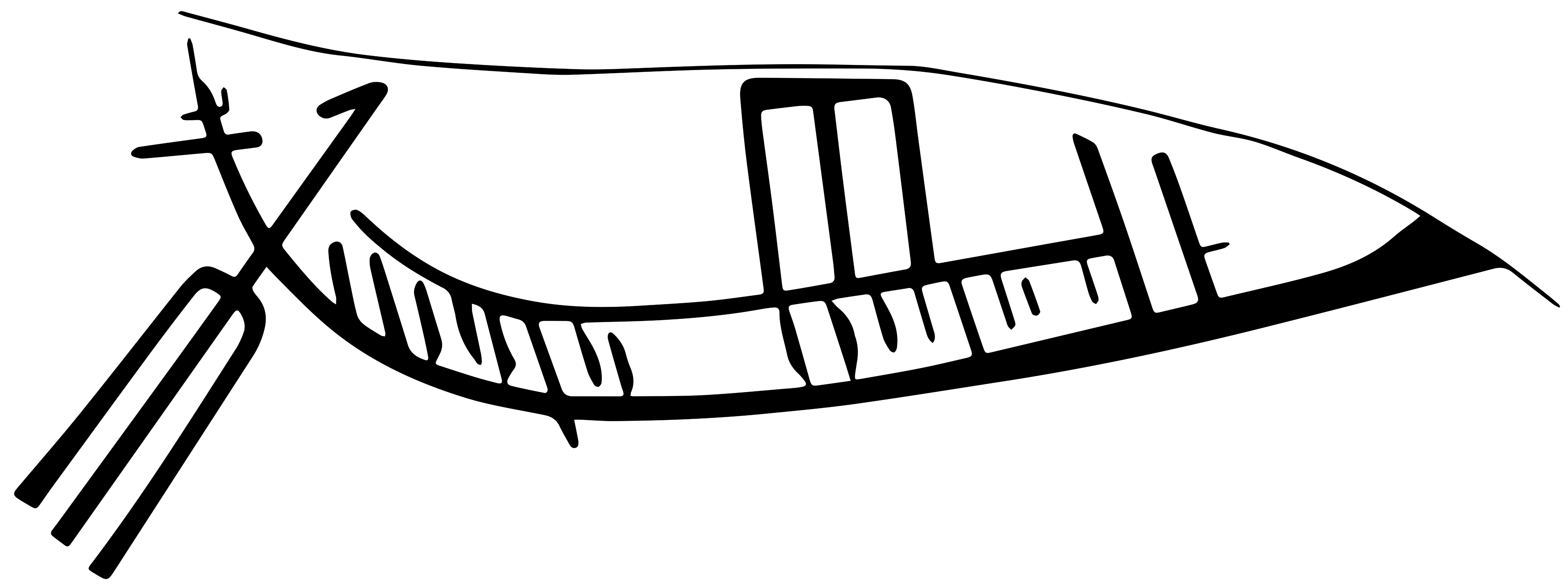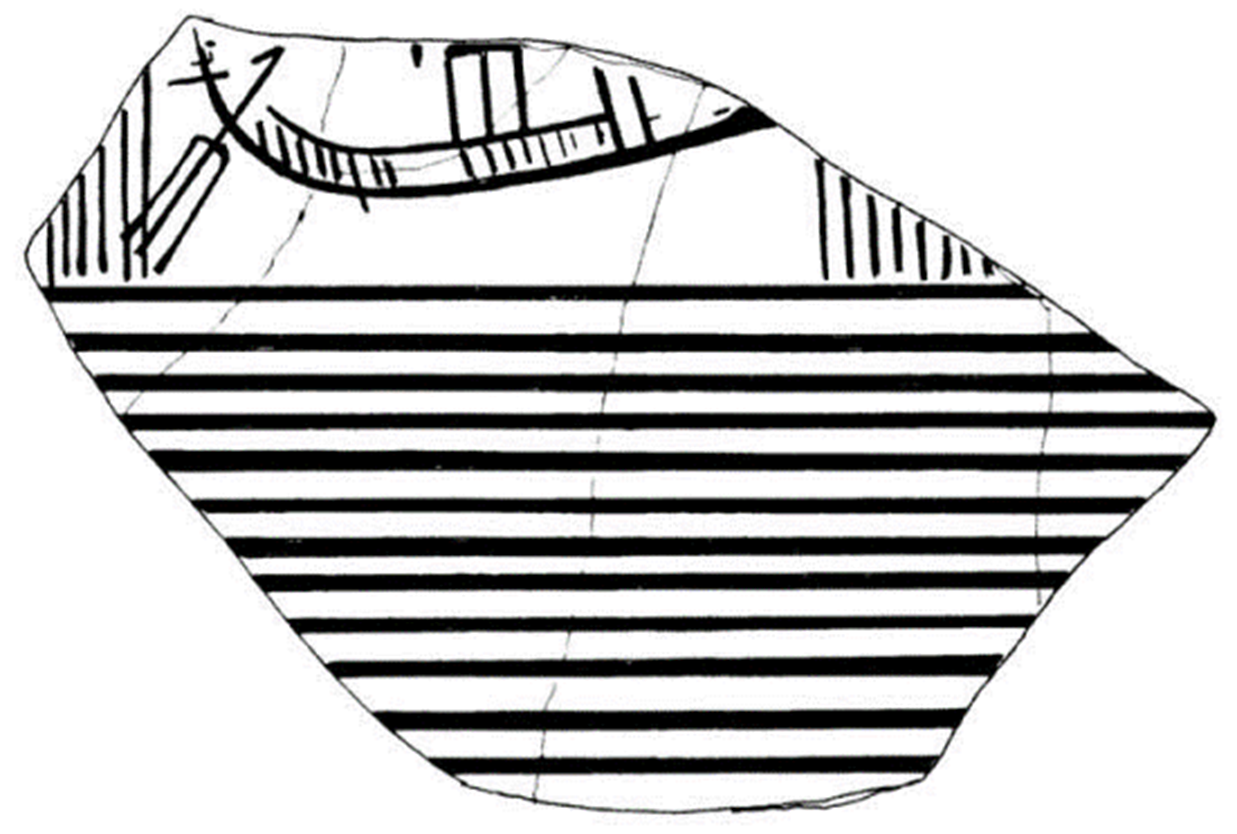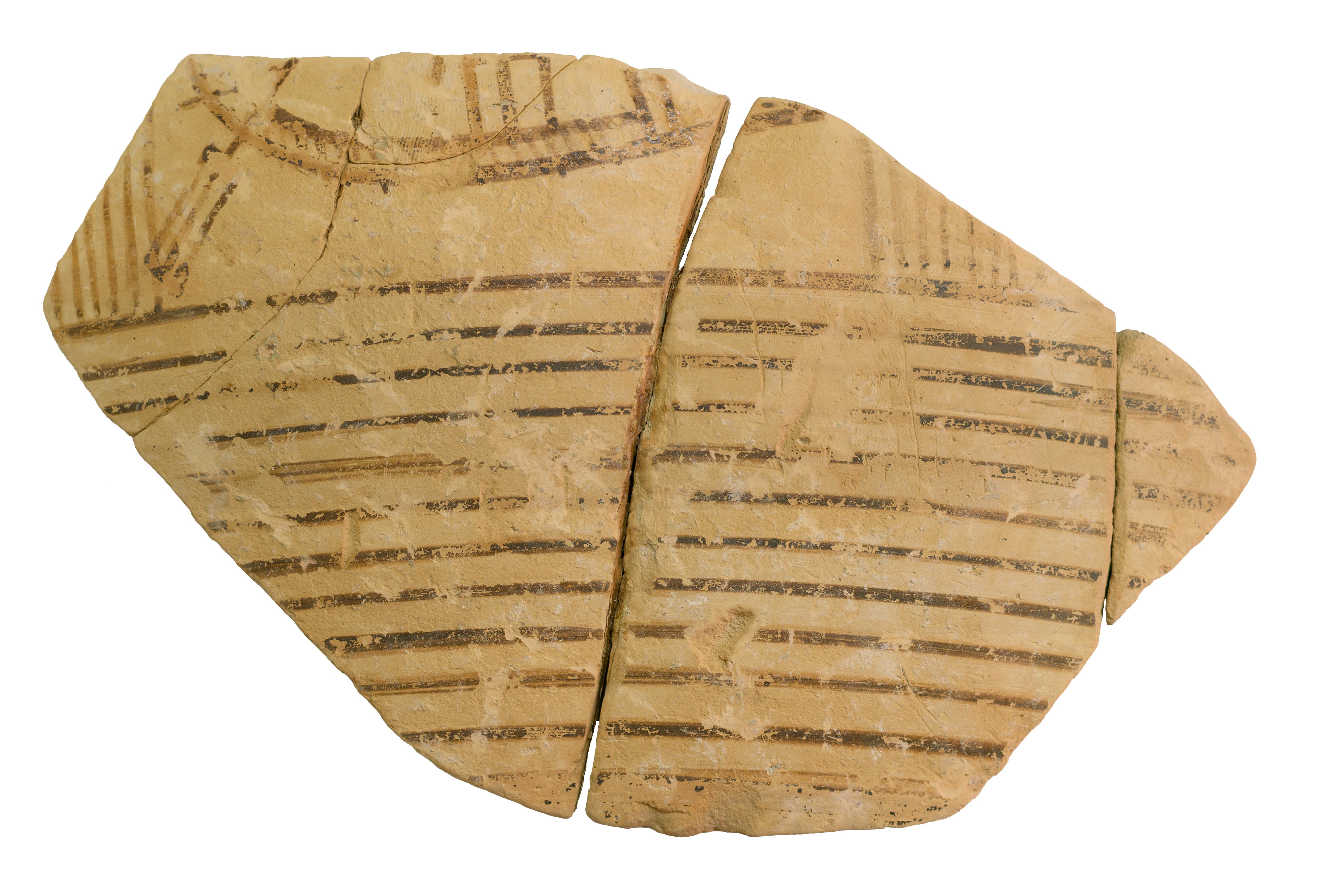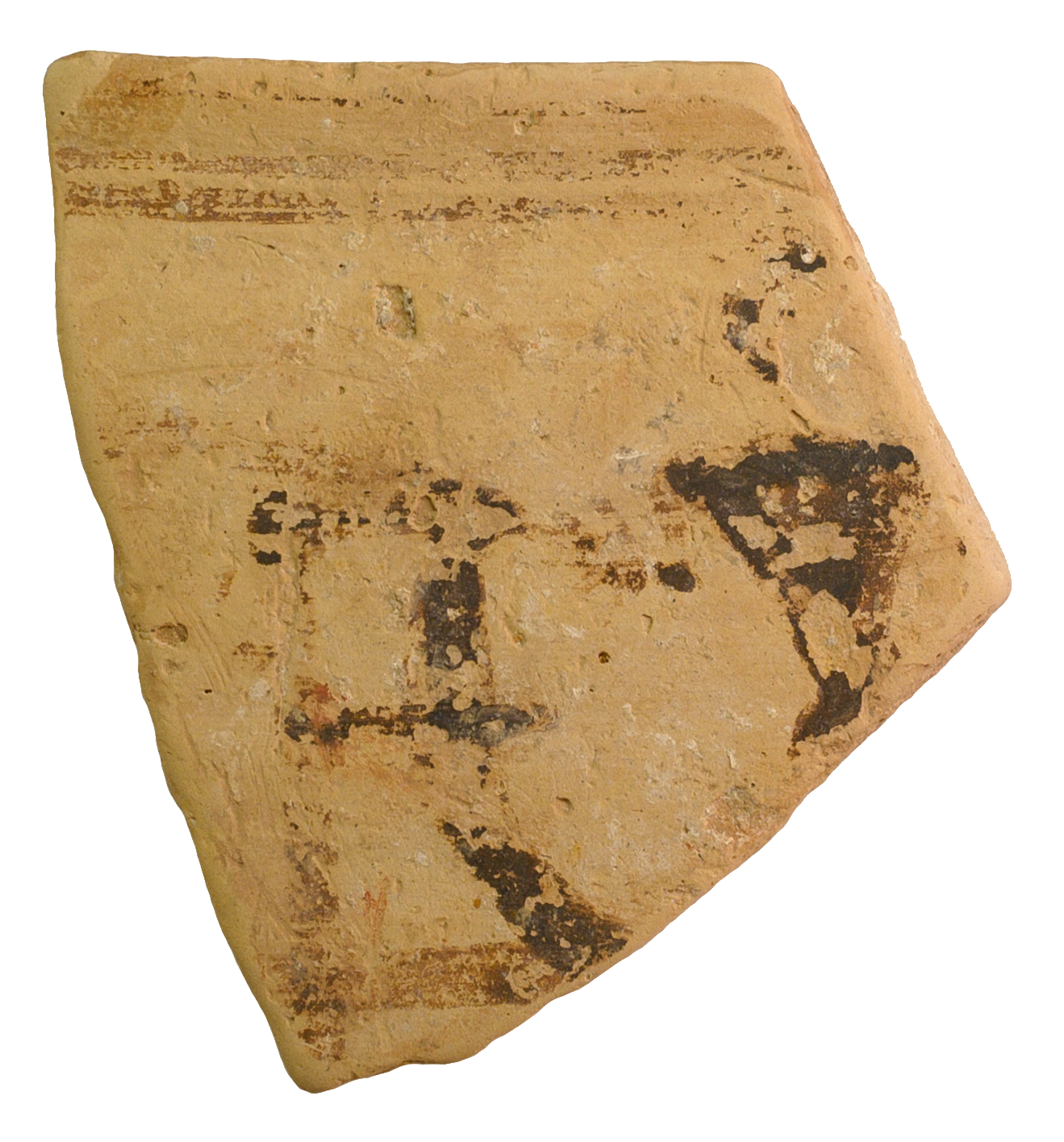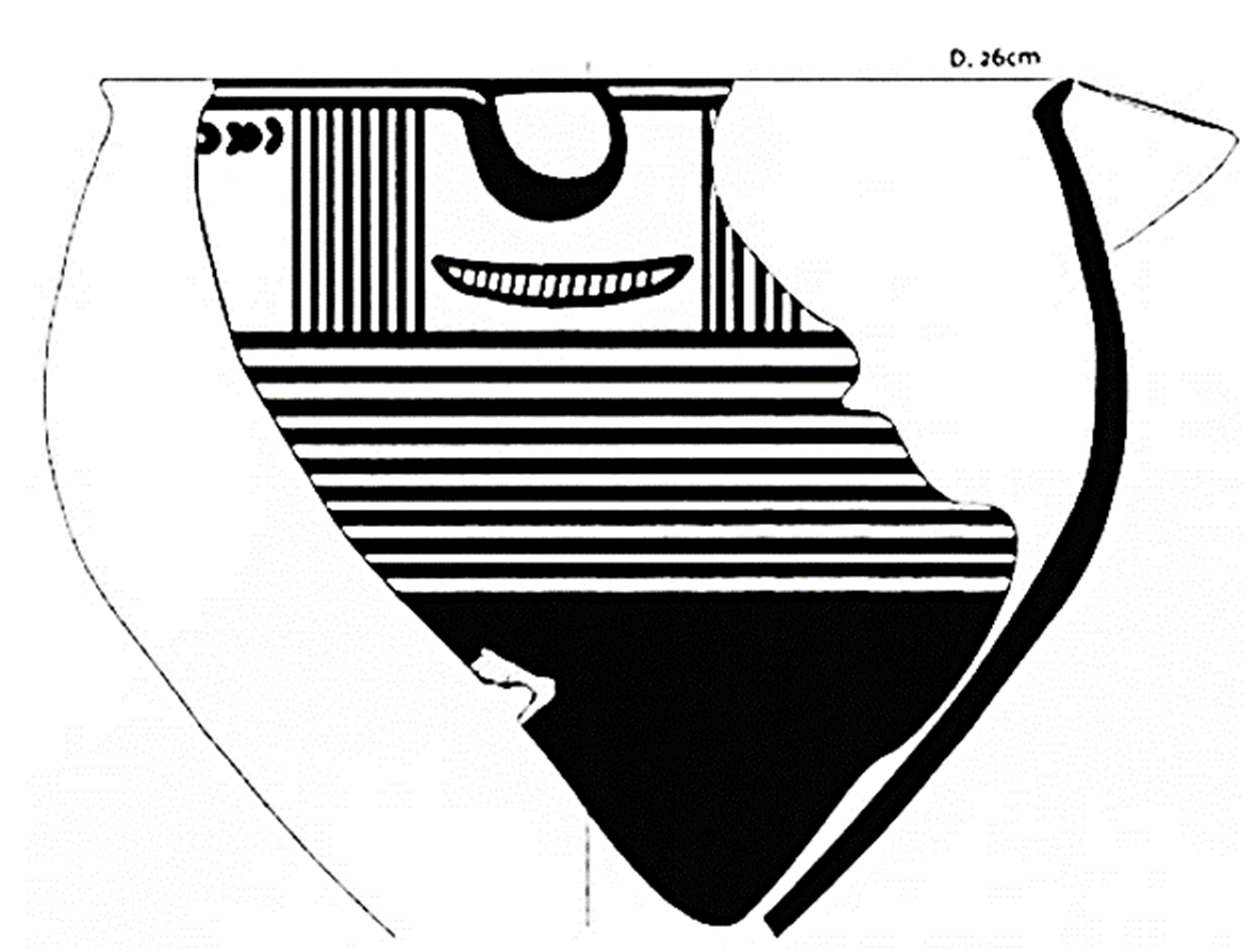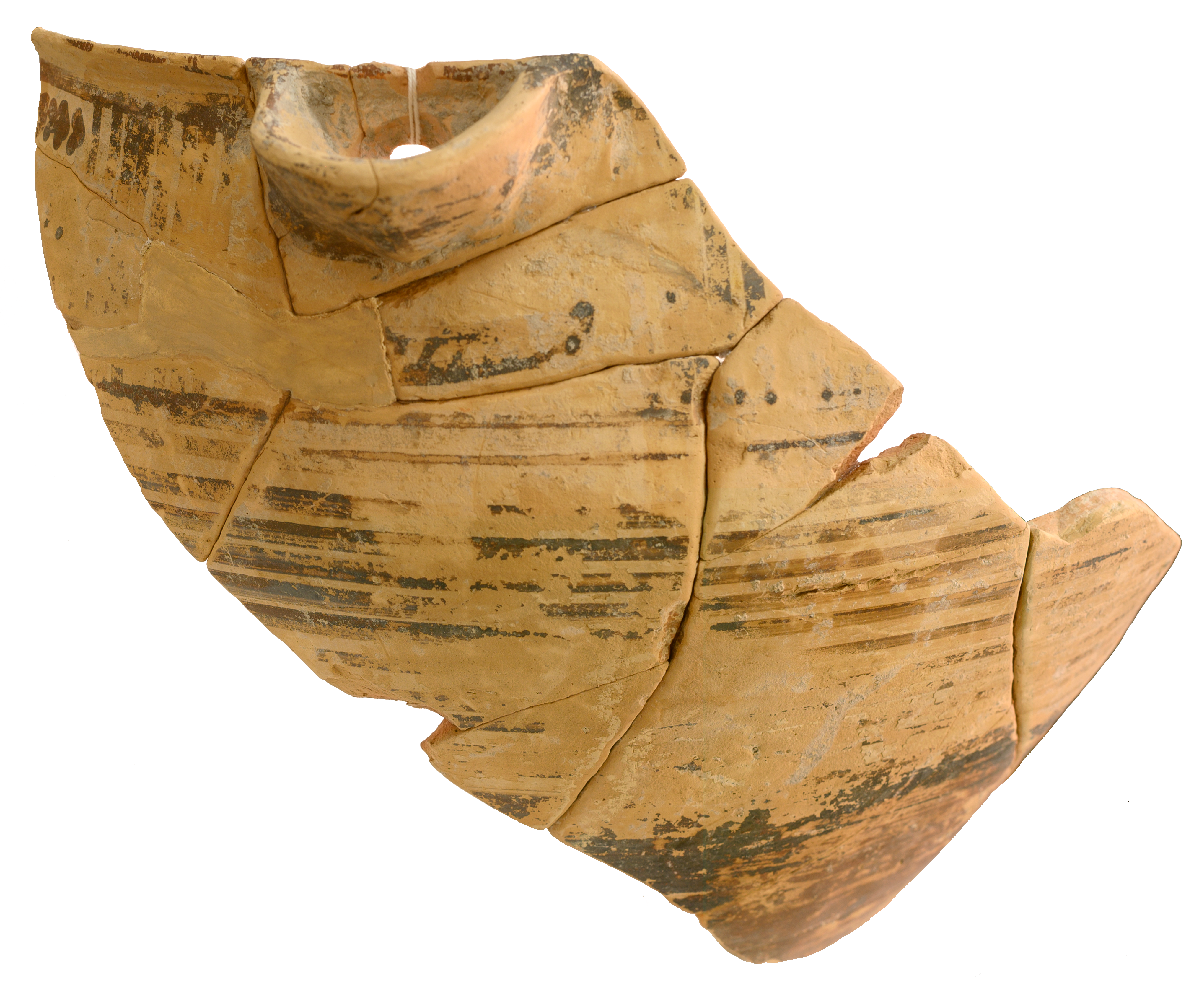A117a: Fragmentary single levelled ship to the right with a low flat hull, a straight vertical stempost, and a high curving sternpost. The hull is formed by two thin parallel horizontals connected by a series of sixteen vertical lines. These are not continuous, with an empty section aft of amidships. The stempost and presumably the forecastle are represented by two parallel vertical lines, the upper half of which is missing. The keel line curves gradually into a vertical sternpost. A short horizontal stroke intersects the sternpost roughly at the level of the quarter rudder's handle. The quarter rudder has a rectangular oar blade with its bottom edge left open. The mast is amidships, encased in a rectangular mast step tabernacle. The verticals along the hull are difficult to interpret. The second non-joining fragment with a human figure possibly shows him standing next to a ship. The fragmentary state makes its reading difficult but it seems to show a concave stempost and proembolon;
A117b: Schematic rendering of a ship c. 2.6 cm in length. Comprised of two horizontal lines, with the keel-line having a slight rocket and curving up slightly to join the gunwale. The two horizontals are connected by 10 vertical lines.


